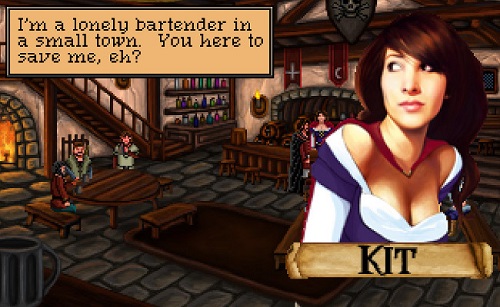There was a bit of a mixup over at PopMatters. I was offered a review copy of Quest for Infamy through one of my own PR contacts and once I got some outstanding work out of the way I accepted. I received the code mere hours before fellow contributor Nick Dinicola’s review of the game went up. This is the third time this has happened to me. But I heavily disagreed with Nick’s assessment so it was decided I would do a second opinion post for my weekly column.
I did not expect this to be as long as it was. I guess without the need to reign it in for suggested review word count and that I felt I needed to explain in more depth the difference in my feels and view on it meant it ended up twice as long as I would have otherwise written it. There is something freeing in being able to explain all your feelings towards a game without restraint in a piece of holistic criticism.
However, that said, I couldn’t find a spot for everything I wanted to mention. There just wasn’t a viable entry point to address it. While I briefly mention him, the narrator is amazing. As far as I’m concerned, he is his own character. While the narrators of previous Sierra games just gave descriptions and sometimes made bad puns, the Quest for Infamy narrator has his own personality. He will give opinions on scenery, make comments at Roehm’s expense and complain at the player for looking at certain items along the lines of, “It’s a door. I’m not sure what else you want from me. It’s a door. You can clearly see it for yourself.” There are moments where Roehm will break the fourth wall to argue with the narrator himself. I feel like there is some sort of master class on point of view to be had just with this narrator and all of his uses.
I also feel I failed to mention this game’s sense of humor. Sierra games, despite being full of death around every corner, were light games that didn’t take themselves too seriously. Often it was with the worlds and the visual puns that filled them. Oh god the puns. While there is a few, the humor here is far more character and situation based, mostly in the dialogue and Roehm’s sardonic wit. Or in some cases its utter failure at it. As much as the intro builds him up as a sort of roguish womanizer, he flat out fails more than a few times. That image above is one such instance. The game manages to get something out of the motions without going through them.
Finally, I feel like I should expand upon my comments on Quest for Infamy’s treatment of its female characters. I described two of the characters—Kayanna and Valeris—who are the biggest women roles in the game, but I would like to mention one other as I feel it also exemplifies the dual nature of how these characters were created. Deep in a dungeon is a busty, green skinned woman wearing very revealing fantasy cheesecake mage’s garb called the Necromancer. Her design is obviously meant to be ogled by the male players of the game. And yet, nothing else about her falls into the big, face palming tropes of women characters. Yes, she’s dressed ridiculously and is evil, but at no point does she use sex as a weapon. No her first move, hex Roehm so he can’t move and then set a curse spell on him to give him incentive to do her bidding, namely play gopher for the last two ingredients needed for a ritual. She’s building a monster as a weapon to gain power and yes try to take over the world. When it fails, because never send Roehm if you want the job done properly, she goes for the kill and the spell is reflected back at her due to some protection your teacher had placed on you without your knowing.
The Necromacer is a rather stock villain archetype, but other than her design it plays on none of the negative tropes that plague specifically women variations of that archetype. The Necromancer could have been a man and other than some snide comments that Roehm pays for in the moment, nothing would have really changed about this encounter. Honestly, she might have been a better example to use than either Kayanna or Valeris, whom both require more in depth analysis to their character, which one is not inclined to do immediately given their dress. I do understand what it was supposed to do, characterize and reflect poorly on Roehm with his reactions to them. Though he never goes past his innuendo style of flirting that gets him nowhere and fast. But it puts burden on their characters, who are interesting in their own right and do affect both the world and the plot. I guess my point, is that there is something there if you are willing to look past their looks. Men I’m sure will have an easier time of that.
Hope you liked these extended thoughts to my long form review of Quest for Infamy.
7 out of 10 if you’re curious.

